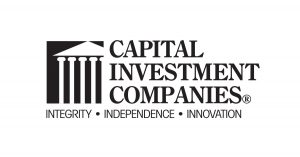
Market Down and Dirty
Last Week’s Economic/Market Summary
Data
- U.S. equities were firmly negative last week as the Federal Reserve dominated price action.
- S&P 500 -2.92% Dow -1.89% Russell 2000 -3.78%, Nasdaq -3.62%[1]
- The All-Country World Index dropped -2.72%.1
- S&P 500 sub-sectors were all down last week.
- Healthcare was the best down performer at -1.54%.1
- Consumer Discretionary & Real Estate led to the downside with losses over 6%.1
- The CBOE Volatility Index (VIX) gained 25% to end the week at 17.20. 1
- S&P 500 -2.92% Dow -1.89% Russell 2000 -3.78%, Nasdaq -3.62%[1]
- US Treasury bond yields rose last week.
- US 2yr +0.08% at 5.10%, 10yr +0.11% to 4.44%, 30yr +0.11% to 4.53%.1
- Treasuries are now down year-to-date and threaten a record 3rd straight down year. 1
- Commodities as an aggregate asset class were lower last week.
- WTI Crude declined -0.51%.1
- Gold was flat at +0.06%.1
- The US Dollar index gained +0.24%.1
- In our opinion, U.S. economic data continued to be mixed last week.
- The Fed maintained interest rates and signaled one more to come this year. 1
- Initial jobless claims came in better than expected but past released were revised higher. 1
- The housing market showed signs of slowing with data coming in well below estimates. 1
- An index of equities outside the US (FTSE All-World ex-US) declined -2.59%.1
Conclusion
- US Equities struggled last week as they completed their worst collective week since March.
- The S&P 500 dropped nearly 3% last week and is heading for its first quarterly loss in a year. 1
- The tech-heavy Nasdaq & small-cap tracking Russell 2000 led with losses over 3.6%.1
- The Nasdaq 100 which tracks the largest companies in the index has now dropped over 5% in September while it continues to trade at more than 31x annual earnings. 1
- Double-digit gains this year in the S&P 500 and Nasdaq 100 have been fueled by optimism that nascent technologies such as artificial intelligence will unlock a new wave of growth for technology companies, justifying the sector’s eye-watering valuations.
- Yet skepticism appears to be setting in as the cost of capital climbs, threatening to pressure companies big and small.
- We note the next couple of quarters could be difficult for Tech to meet lofty expectations for their respective earnings as the A.I. hype might not be enough.
- S&P 500 subsectors were all deeply negative last week as Healthcare was the only area that didn’t lose over 2% on the week. 1
- Discretionary & Real Estate led the way followed by Materials, Industrials, and Financials. 1
- Interesting to note that the S&P 500 Industrials index peaked on Aug 1st and is down about 8% since then, teetering on a correction after several major US companies cut their profit outlooks for the third quarter on a sudden jump in oil prices. 1
- Additionally, the small-cap Russell 2000 Index has lost more than 11% from its July 31st closing high, roughly twice the decline in the S&P 500 Index over the same time. 1
- Steep drops in small-cap and industrial stocks historically have occurred when the economy is in or around a recession.
- US Treasury yields were higher last week as all eyes were squarely on the Federal Reserve.
- The yield curve saw longer maturities rise more than the short-end.
- In the latest Fed meeting, they kept rates unchanged while signaled one more hike this year.
- We believe one of the largest impacts from the Fed was a result of them adjusting their forward guidance dot-plot higher by 0.50% throughout next year.
- The market had been pricing in quicker cuts by the Fed and this reiterated what Chair Powell has indicated repeatedly…they’ll keep rates higher for longer in order to achieve their stated objectives.
- Additionally, Chairman Powell stated that real yields, which touched decade-highs this week, need to stay meaningfully positive “for some time.” 1
- This coincides with real-world borrowing costs having jumped across Corporate America and the higher cost of capital just appearing to be causing some pain to companies.
- The bottom line is higher rates are creating “refinancing risks” across the economy and are just beginning to be seen in the commerical real estate market as well as with business lines of credit.
- We anticipate this continuing to pick up steam for the forseeable future.
Ryan A. Mumy, CFP®,
AIF® – Chief Investment Officer
Contact: 828/855-9400
info@CIASonline.com or rmumy@bloomberg.net
1 Source: Bloomberg – 9/22/2023
Disclosures: The information provided in this paper is for general informational purposes only and should not be considered an individualized recommendation of any particular security, strategy or investment product, and should not be construed as investment, legal or tax advice. Capital Investment Advisory Services, LLC makes no warranties with regard to the information or results obtained by third parties and its use and disclaim any liability arising out of or reliance on the information. This information is subject to change and, although based on information that Capital Investment Advisory Services, LLC considers reliable, it is not guaranteed as to accuracy or completeness. Source information is obtained from independent financial data suppliers. For investment related terms definitions, please visit: www.investopedia.com Past performance is no guarantee of future results. Additional information about CIAS and its Form ADV Part 2A are available on the SEC’s website at www.adviserinfo.sec.gov Advisory services through Capital Investment Advisory Services, LLC Securities may be offered through Capital Investment Group, Inc. Member FINRA/SIPC Both firms located at 100 E. Six Forks Rd. Suite 200, Raleigh, NC 27609 919-831-2370

